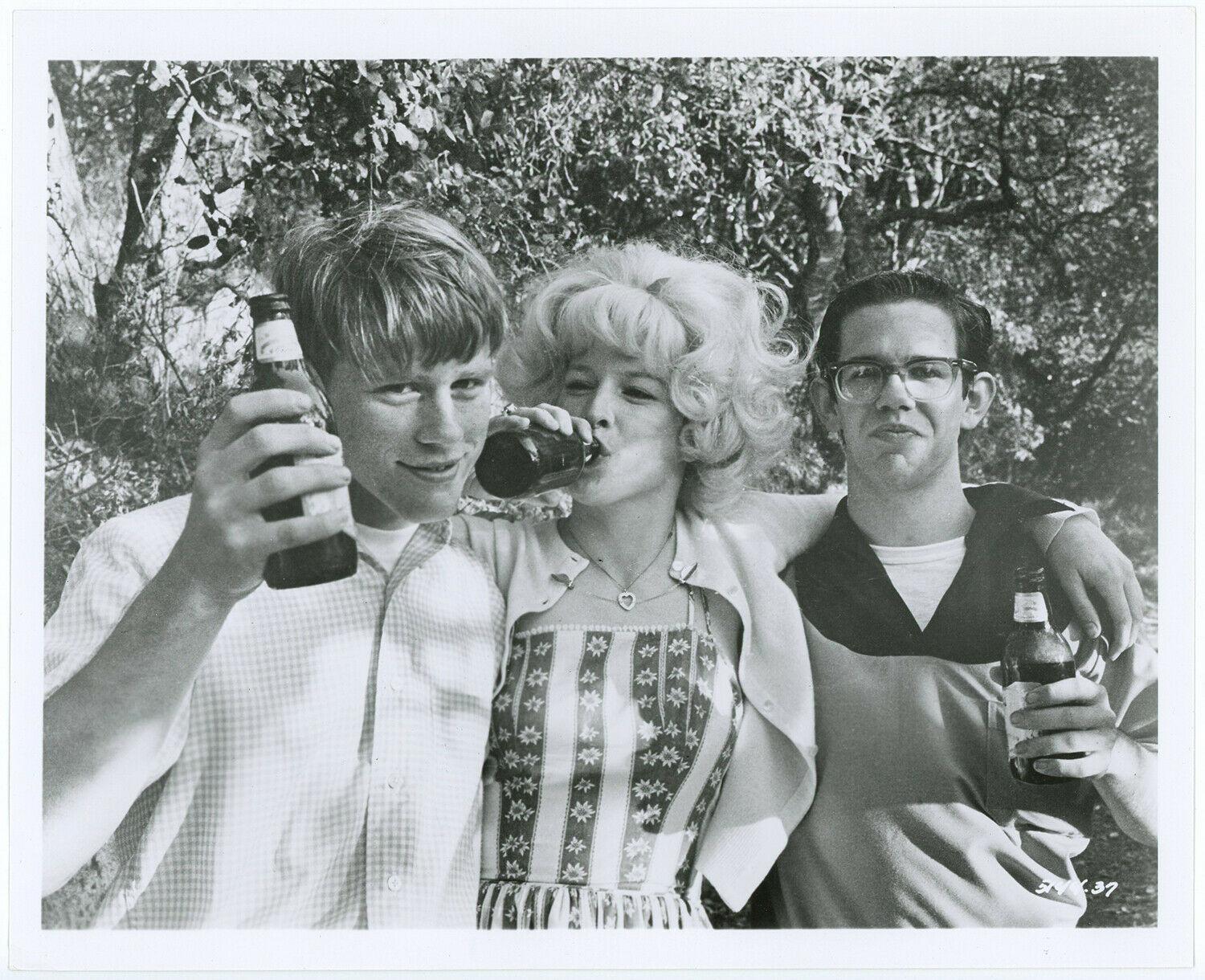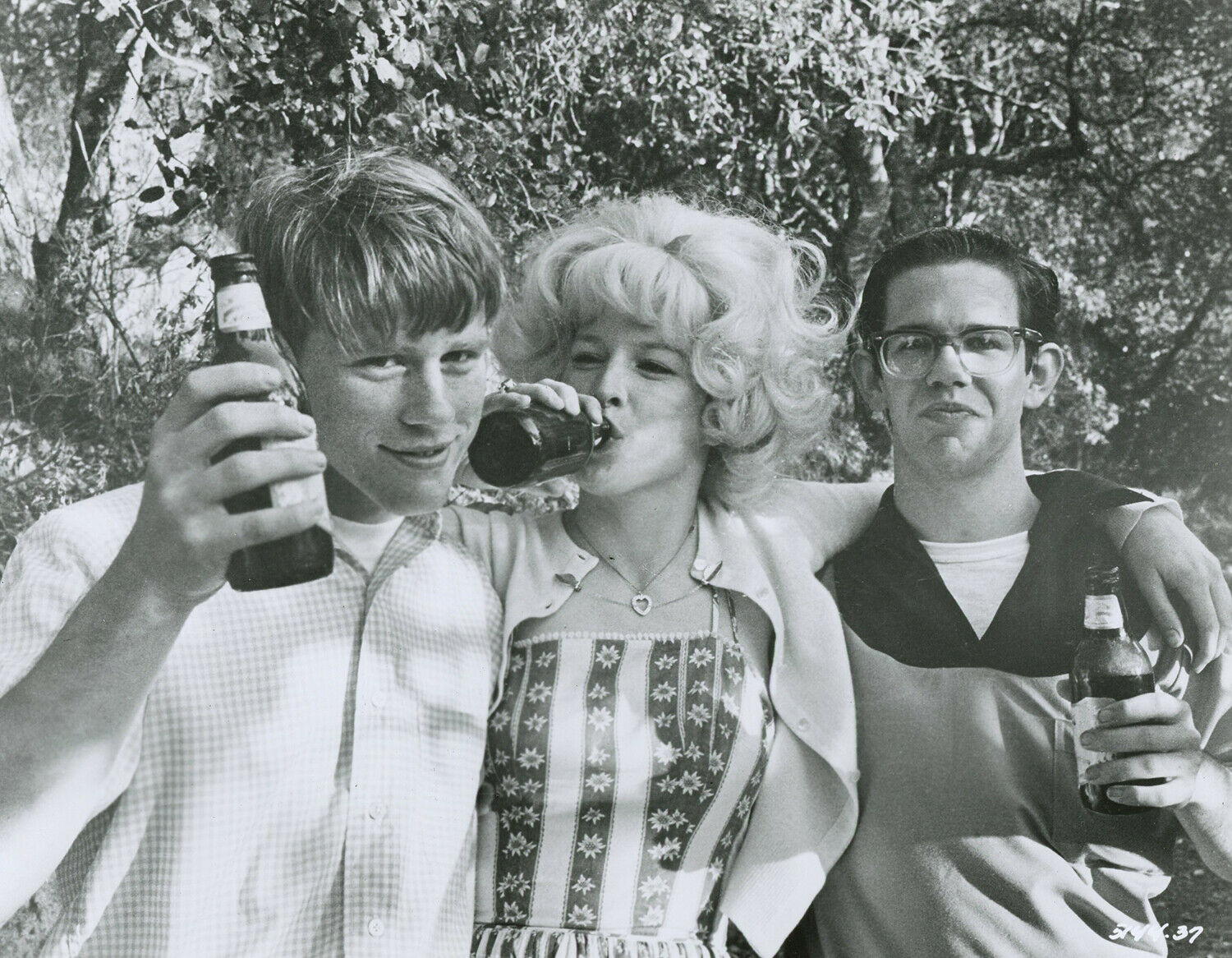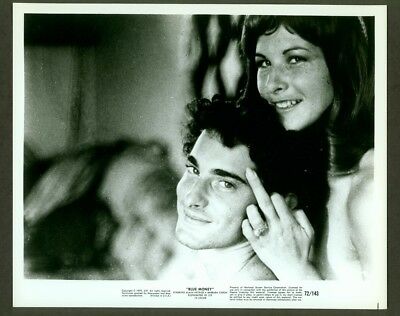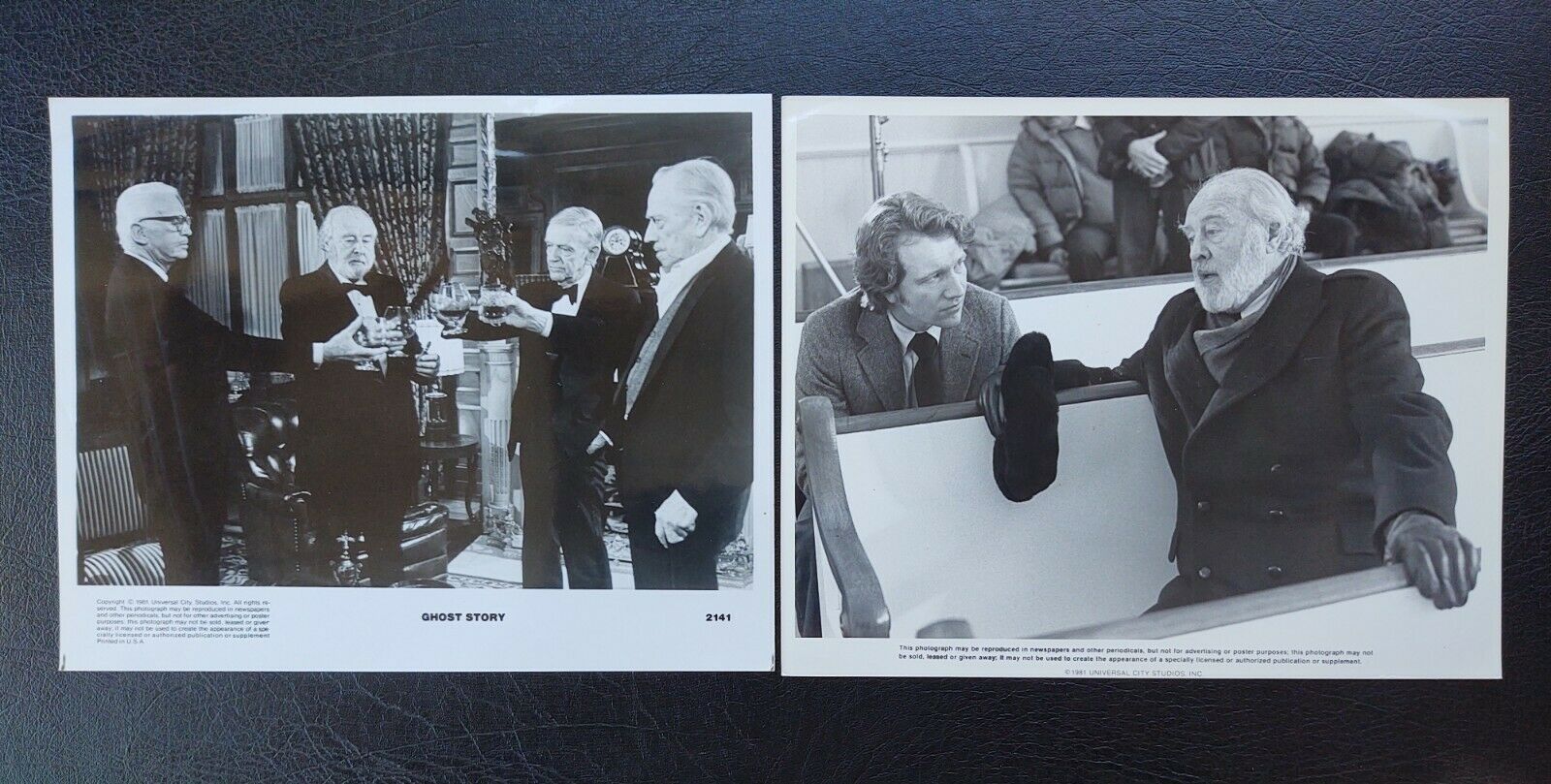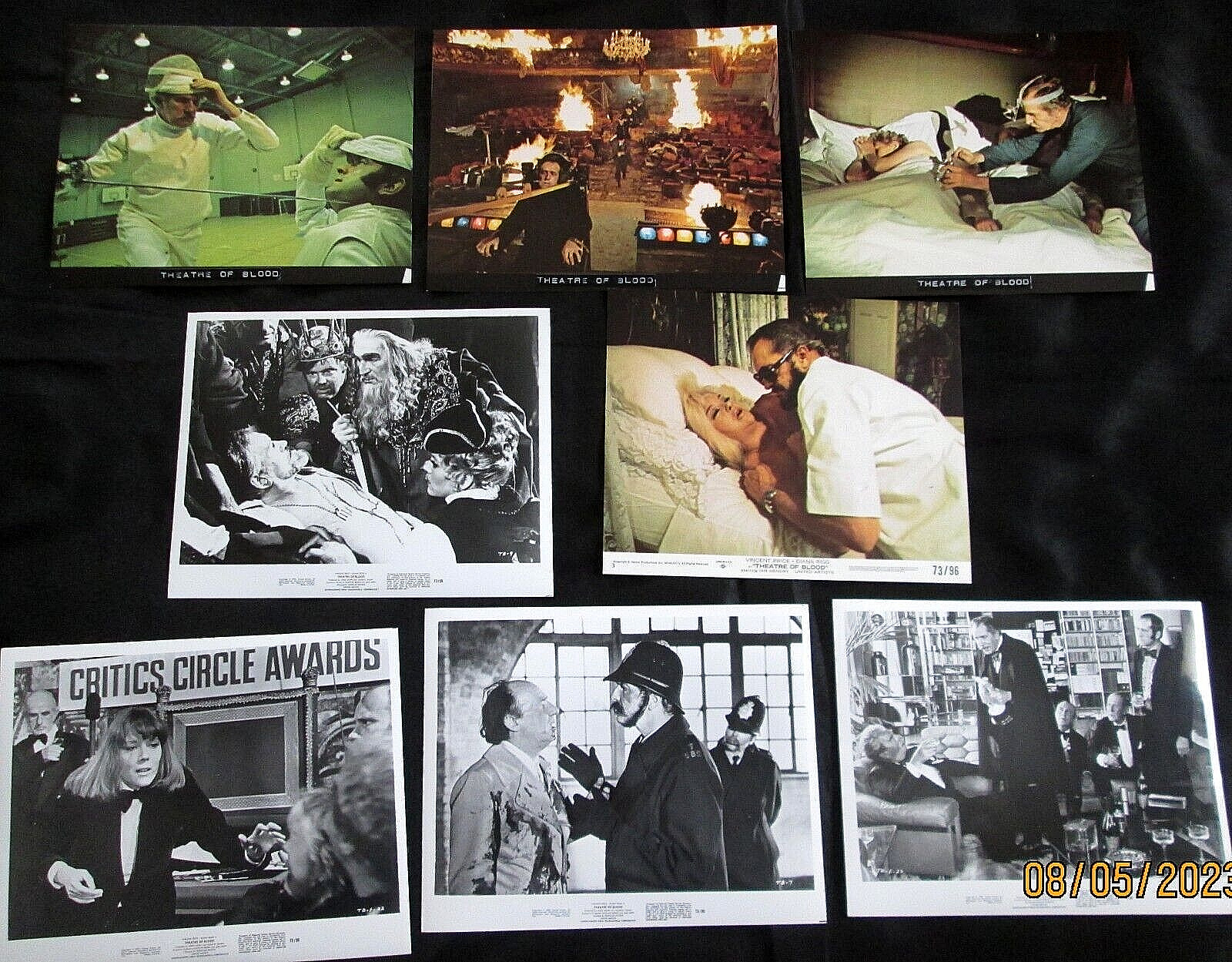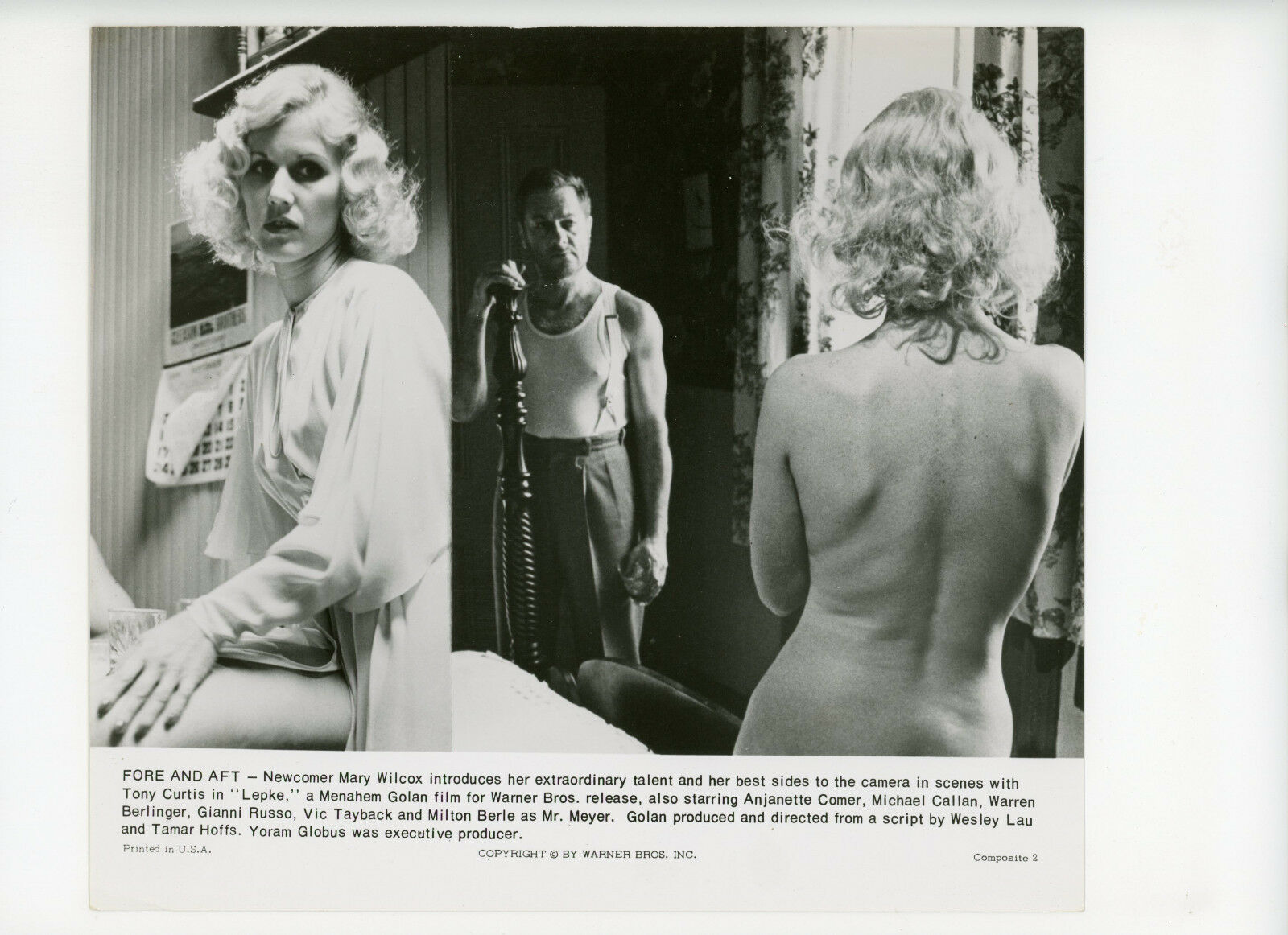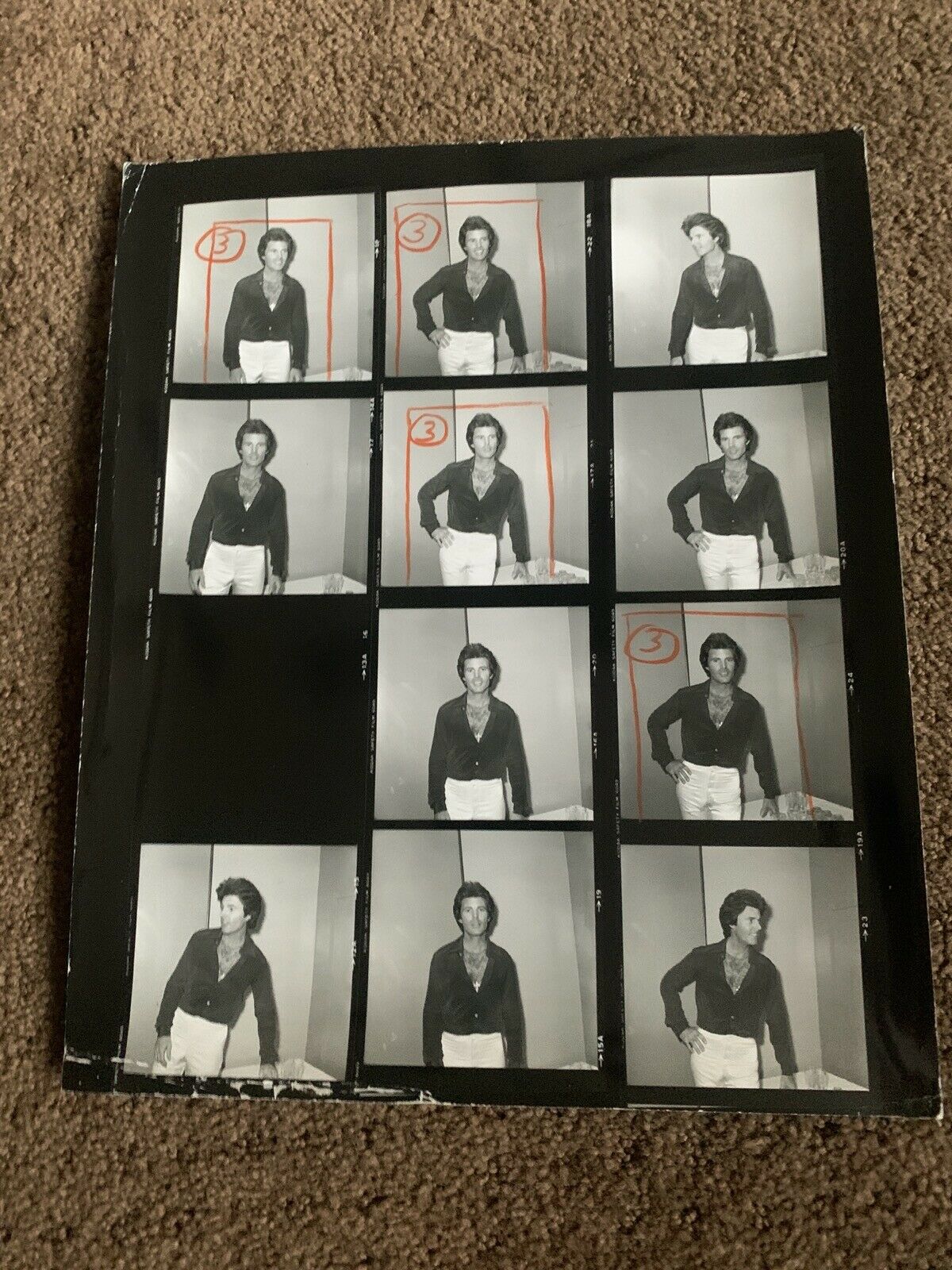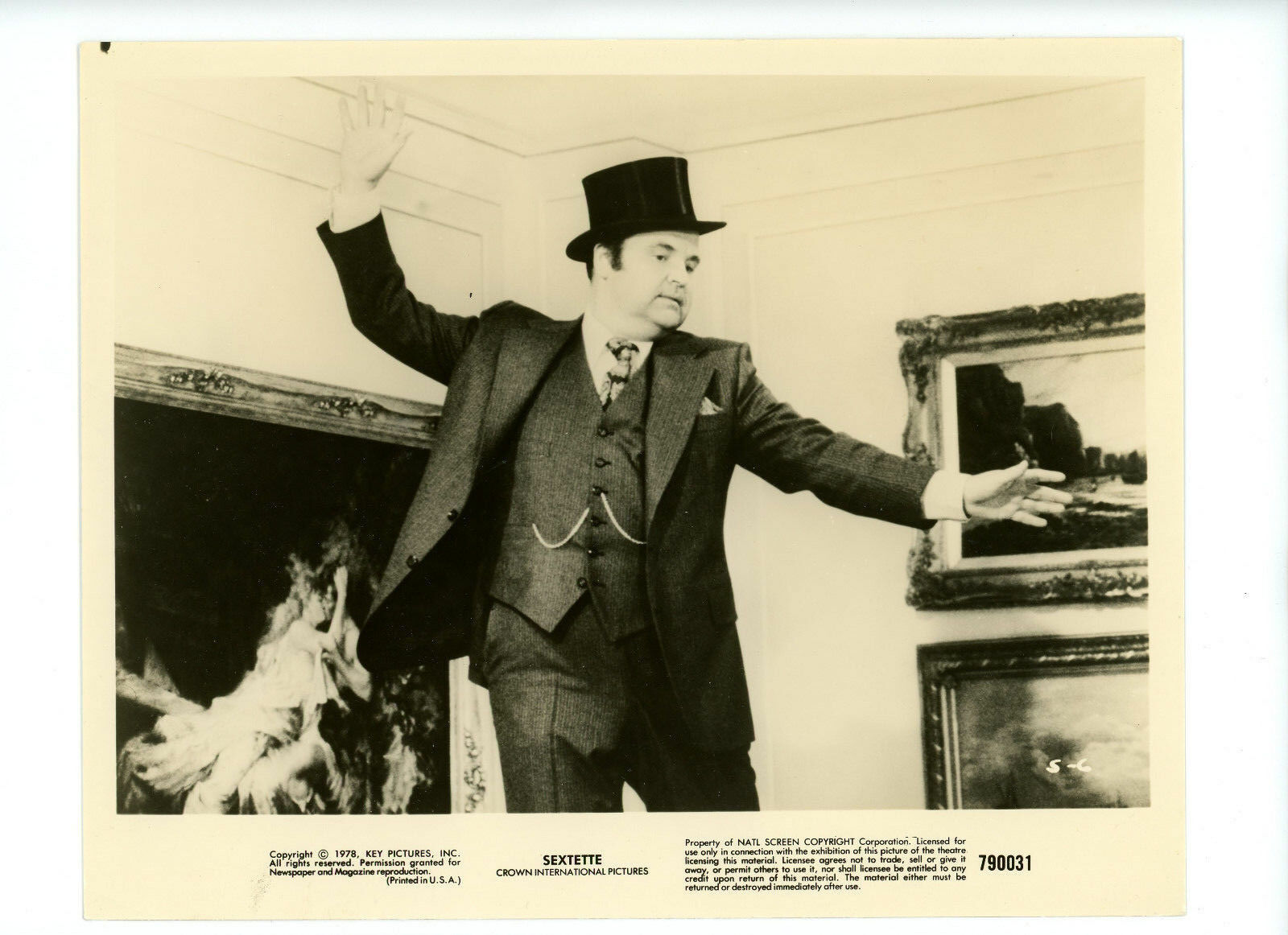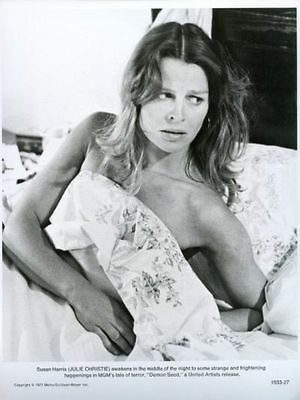-40%
Ron Howard, Candy Clark, Charles Martin Smith American Graffiti Photograph 1973
$ 9.74
- Description
- Size Guide
Description
ITEM: This is a vintage and original behind-the-scenes photograph of actors Ron Howard, Candy Clark, and Charles Martin Smith enjoying a cold beverage together while filming the 1973 coming-of-age comedy film "American Graffiti."Set in Modesto, California, in 1962, the film is a study of the cruising and early rock 'n' roll cultures. Through a series of vignettes, the film tells the story of a group of teenagers and their adventures over the course of a night. The film received widespread critical acclaim and was nominated for the Academy Award for Best Picture. In 1995, the United States Library of Congress deemed the film "culturally, historically, or aesthetically significant" and selected it for preservation in the National Film Registry.
The press snipe on verso reads:
AMERICAN GRAFFITI
Ronny Howard, Candy Clark and Charlie Martin Smith, youthful stars of "American Graffiti," join in a beer bust between scenes. "American Graffiti," a Lucasfilm Ltd./Coppola Company production for Universal, stars Richard Dreyfuss, Ronny Howard, Paul Le Mat, Charlie Martin Smith, Candy Clark, Mackenzie Phillips, Cindy Williams and Wolfman Jack. George Lucas directed the nostalgic comedy about carefree high school teenagers in 1962 for producer Francis Ford Coppola and co-producer Gary Kurtz. George Lucas, Gloria Katz and Willard Huyck wrote the screenplay.
Photograph measures 10" x 8" on a glossy single weight paper stock with typed studio text on verso.
Guaranteed to be 100% vintage and original from Grapefruit Moon Gallery.
More about Ron Howard:
Ever since he made his acting debut when he was less than two years old, former television star-turned-film director Ron Howard enjoyed legendary status on both sides of the camera. After he charmed television audiences as Opie Taylor, the loveable son of a small town sheriff on "The Andy Griffith Show" (CBS, 1960-68), Howard cemented his fame as Richie Cunningham on the iconic series, "Happy Days" (ABC, 1974-1984). Though he was dogged for the remainder of his career with being identified by fans as Taylor or Cunningham, he did manage to reinvent himself as an Oscar-winning director of some of cinema's biggest commercial successes. Sometimes criticized for being overly sentimental and directing with a heavy hand, Howard nonetheless topped the box office on several occasions with films like "Splash" (1984), "Cocoon" (1985) and "Parenthood" (1989). By the time he directed the critically acclaimed and award-winning "Apollo 13" (1995), "A Beautiful Mind" (2001) and "The Da Vinci Code" (2006), Howard was in the upper echelon of directors working in Hollywood and his producing partnership with Brian Grazer one of the most successful in Hollywood delivering hits ranging from "Dr. Seuss' How the Grinch Stole Christmas" (2000) to the political drama "Frost/Nixon" (2008) to a fan's-eye view of the Beatles' touring years, "Eight Days A Week" (2016). When he produced one the most beloved and acclaimed TV comedy series of all time, "Arrested Development" (Fox, 2003-06), he also conquered that medium, making Howard one of the most consistently successful filmmakers and TV producers of his generation. Howard entered another realm of filmmaking in 2017 when he took the helm of the stand-alone film about a young Han Solo, joining the "Star Wars" universe.
Born on March 1, 1954 in Duncan, OK, Howard was raised in a show biz household by his father, Rance, and his mother, Jean, both of whom were actors. Howard's career started early in life with his first professional appearance alongside his parents when he was just 18 months old. When he was six, Howard was cast as Opie, the personable son of widowed Sheriff Andy Taylor (Andy Griffith), on "The Andy Griffith Show." For eight seasons, America watched Howard grow up as Opie, who learned a series of typical life lessons that were taught to him by his caring, but sometimes exacerbated father. Though occasionally getting himself into mild trouble, Opie always managed to emerge unscathed and sometimes with a new outlook on life, thanks to "his paw." Prior to his Mayberry run, Howard made his feature debut in "The Journey" (1959), starring Yul Brynner and Deborah Kerr. He continued working in features during breaks in television production, singing "Gary, Indiana" in "The Music Man" (1962), playing the son of another widowed father (Glenn Ford) in "The Courtship of Eddie's Father" (1963), and playing a child genius who develops a potion that turns a group of teenagers into giants in "Village of the Giants" (1965).
After departing his charmingly rustic fictional hometown of Mayberry, NC in 1968, Howard embarked on a minor feature career that contained a few bright spots; most notably as Steve Bolander, a college-bound teenager desperate to leave his hometown, in "American Graffiti" (1973), George Lucas' landmark slice of early-1960s Americana about a group of high school graduates dealing with life decisions on their last night of summer. Playing Steve Bolander led to another iconic television gig as Richie Cunningham, the all-American boy-next-door of the popular faux-1950s sitcom "Happy Days." During his six season run on the show, Howard reached the height of his visibility, thanks to the popularity of both "Happy Days" and "American Graffiti," as well as "The Andy Griffith Show" going into syndication. In fact, so famous were Richie Cunningham and The Fonz (Henry Winkler), that appearances at malls could attract upwards of 20,000 screaming fans. But when it became apparent that audiences were more crazed about The Fonz, Howard - who was and remained close friends with Winkler - realized his time on the show was limited. So when, in 1980, his contract ended, he left the show to chart a different course.
Howard continued to thrive on the big screen during "Happy Days," making his mark in a memorable supporting role as the son of a widowed Lauren Bacall who falls under the influence of a dying gunfighter (John Wayne) in "The Shootist" (1976). Howard was nominated for Best Supporting Actor at the Golden Globes, then one statue at the same awards two years later for playing Richie Cunningham. But by this time, he had his sights on becoming a director, finally making his debut at the age of 23, after convincing schlock indie producer Roger Corman to give him a shot. Corman agreed, but only if Howard starred in the film. The result was "Grand Theft Auto" (1977), an action comedy that featured tons of car chases and explosions, but not much else. Howard did, however, manage to turn a profit, allowing him to continue directing, which he did with "Cotton Candy" (NBC, 1978), a movie-of-the-week about a group of high school misfits who form a rock band, filmed from a script he co-wrote with brother and character actor, Clint Howard. He then directed "Skyward" (NBC, 1980), an ode to the golden age of television about an aging barnstormer (Bette Davis) helping a paraplegic girl (Suzy Gilstrap) realize her dream of flying.
After reviving Steve Bolander for "More American Graffiti" (1979), and starring in a few made-for-television movies like "Fire on the Mountain" (NBC, 1981) and "Bitter Harvest" (NBC, 1981), Howard was more or less done with acting. He then made an indelible mark with his second feature, "Night Shift" (1982), a wacky comedy about two morgue attendants (Henry Winkler and Michael Keaton) who run a prostitution racket with the help of a freewheeling hooker (Shelley Long). Aside from marking Howard's first successful studio gig, "Night Shift" featured the first collaboration between the director and ambitious producer Brian Glazer, as well as with "Happy Days" writers Lowell Ganz and Babaloo Mandel. With another success under his belt, Howard helped launch the career of another star, Tom Hanks, with "Splash" (1984), a romantic fantasy about a man (Hanks) who falls in love with a mermaid (Daryl Hannah). A huge success for Disney's new Touchstone division, "Splash" cemented Howard's dream of becoming a full-fledged director, though his other dream of erasing the public memories of Opie Taylor and Richie Cunningham seemed next to impossible.
Howard enjoyed another big box office success, directing veteran actor Don Ameche to a Best Supporting Actor Oscar with "Cocoon" (1985), a Spielbergian sci-fi fantasy about three elderly Florida retirees (Ameche, Wilford Brimley and Hume Cronyn) who discover the fountain of youth in the form of alien pods at the bottom of their retirement home's swimming pool. He then reunited with newly minted star Michael Keaton for "Gung Ho" (1986), an above-average comedy about an energetic mover-and-shaker (Keaton) who tries to save an automobile assembly factory from closing its doors by allowing the more stringent Japanese to take over. Meanwhile, during the previous year, Howard and Grazer formed Imagine Films Entertainment, which went public the same year "Gung Ho" was released. After making a brief return to acting by reprising Opie Taylor in the made-for-television special, "Return to Mayberry" (NBC, 1986), Howard tried his hand at an overblown fantasy with "Willow" (1988), a lavish George Lucas-produced fairy tale populated with elves, trolls and a gallant hero (Val Kilmer), which suffered from high expectations, low box office returns and a widespread critical drubbing.
Despite the failure of "Willow," the tone and style of a Howard-directed film was firmly in place. Much as his success as a child actor helped extend the cozy, sweet aura of mainstream film and television; his features relied on old genre formulas with strong, clear-cut stories, feel-good optimism and a playful whimsy that contrasted with the grimmer, more violent edge of contemporary mainstream cinema. This paradigm was on full display with his next feature, "Parenthood" (1989), a smart, funny and well-received comedy about the unending joys and frustrations of raising children, as seen through four siblings (including Steve Martin and Dianne Wiest) with their own semi-dysfunctional families. A big success with both critics and audiences, "Parenthood" deftly combined heartwarming sentimentality with salacious humor. Howard next directed perhaps one of the best films about firefighters of all time, "Backdraft" (1991), a visually stunning, but somewhat overly-sentimental look at a group of Chicago fireman, including two rival brothers (Kurt Russell and William Baldwin), battling a series of arsons investigated by a dogged expert (Robert De Niro). Another moderate financial success for the director, "Backdraft" also proved its cultural significance by spawning a ride at the Universal Studios Hollywood theme park.
After a number of very successful features, Howard and Grazer felt that Imagine was not paying them their street value. So in 1992, they announced plans to leave Imagine for a joint venture at Universal. Their action horrified stockholders, who consequently allowed Howard and Grazer to renegotiate their deal so that Imagine could lend them the money to buy out the company. By 1993, Imagine was a privately-owned entity with Howard and Grazer serving as co-CEOs. Meanwhile, Howard directed his first historical romance, "Far and Away" (1992), a would-be epic starring Tom Cruise and Nicole Kidman as two turn-of-the-century Irish immigrants who flee their homeland to settle in the American West, where they face all manner of hardships while trying to claim their part of the Oklahoma land rush of 1893. Though immensely proud of this film, "Far and Away" proved to be Howard's first true critical and box office failure. He received more positive notices, however, for "The Paper" (1994), a somewhat sentimentalized comedy-drama about tabloid journalism, as seen through the eyes of a workaholic metro editor (Michael Keaton) at a daily New York City tabloid struggling to balance work and his family.
Howard reached new heights with his next film, "Apollo 13" (1995), the true-to-life drama about the doomed 1970 NASA lunar mission that suffered a potentially fatal loss of oxygen, and the efforts of the crew and ground support to avert potential tragedy. Eschewing archival footage, Howard and his team recreated the time and place in perfect detail, from the interior of the capsule to the command center in Houston to the 1970s decor of the astronaut's homes. With a strong cast that included Tom Hanks, Gary Sinise, Kevin Bacon, Ed Harris and Kathleen Quinlan, "Apollo 13" earned critical kudos and a healthy take at the box office. Indeed, Academy members were suitably impressed and rewarded the film with nine Oscar nominations, including Best Picture. Surprisingly, Howard was omitted from the Best Director category; an oversight that the Directors Guild of America rectified in part by granting him its Director of the Year award. Meanwhile, Howard continued the space theme, collaborating with Hanks as a producer on the Emmy-winning miniseries "From the Earth to the Moon" (HBO, 1998), which traced the history of the Apollo missions from their inception in 1961 through the triumphant 1969 moon landing to the end of the project in the early 1970s. The project was hailed by critics and earned an Emmy Award and Golden Globe for best miniseries.
For his next three big screen projects, Howard adapted previously produced material, adding his own spin to the films. "Ransom" (1996) was a remake of a 1956 thriller featuring Mel Gibson and Rene Russo as a wealthy married couple whose son (Brawley Nolte) is kidnapped. Somewhat of a departure for Howard, "Ransom" was his first stab at darker material, and though the results were a mixed bag, the film signaled a desire to stretch his wings. Next was "EDtv" (1999), based on the French-Canadian movie "Louis XIX: Roi des Ondes" (1993), which had the interesting premise of a man being followed by television cameras seven days a week, 24 hours a day. Unfortunately, "The Truman Show" (1998) had already covered the same ground more compellingly. In comparison, "EDtv" was less adventurous. The third film, "Dr. Seuss' How the Grinch Stole Christmas" (2000), earned Howard some of the worst notices of his career, even though it proved to be his biggest hit then to date. Competing with the classic television cartoon that was also based on the children's book, the film was a grandly produced affair, with spectacular sets, eye-popping costumes and quirky makeup. Howard's film was also graced with the manic energy of Jim Carrey as the green-furred anti-hero. While critics found the effort ponderous, viewers flocked to screenings, pushing its cumulative box office gross to over 0 million.
Looking to re-establish his bona fides, Howard turned his attention to "A Beautiful Mind" (2001), the story of mathematician John Forbes Nash, Jr. (Russell Crowe), who struggled to overcome schizophrenia with the help of his devoted wife (Jennifer Connelly), only to win a Nobel Prize. Garnering as much controversy as acclaim, however, the film earned loud objections for taking liberties with the facts, leading Howard and screenwriter Akiva Goldsman to concede that they made a fictionalized account of Nash's life. Having received eight Oscar nods, the film ultimately took home four awards, including Howard's first for Best Director. The director's next outing, "The Missing" (2003), starred Cate Blanchett as a frontier woman who must team with her estranged father (Tommy Lee Jones) to rescue her abducted daughter. Though it had its strengths, "The Missing" received mixed critical reviews and middling box office. As himself, he rejoined former cast mates for the well-rated reunion specials "The Andy Griffith Show Reunion: Back to Mayberry" (2003) and "Happy Days: 30th Anniversary Reunion" (2005). He then took on the role of the narrator for the critically acclaimed Fox sitcom "Arrested Development" (2003-06), which he and Grazer executive produced through Imagine, whose slate also included the mega-hit "24" (Fox, 2001-2010).
In 2005, Howard reunited with Russell Crowe for the largely well-received "Cinderella Man" (2005), the warm-hearted story of Depression-era fighter and folk hero Jim Braddock (Crowe), who defeated heavyweight champ Max Baer (Craig Bierko) in a 15-round slugfest in 1935. Although Howard took some criticism for telling the tale with a degree of ham-handedness, the film was generally praised for its uplifting spirit and generated an Oscar nod for co-star Paul Giamatti. His next project, "The Da Vinci Code" (2006), adapted from Dan Brown's blockbuster book, was one of the most controversial and anticipated movies released in decades. Famed symbologist Robert Langdon (Tom Hanks) is called to the Louvre where the murder of a curator has left behind a trail of mysterious symbols and clues leading to a secret society that has spent the past 2,000 years guarding a secret that could bring Christianity to its knees. Even before its release, the Catholic Church urged the faithful to boycott the film because of its depiction of members of Opus Dei. In fact, the church wanted filmmakers to put a disclaimer before the movie stating that it was fiction, not fact - a demand Howard publicly refused.
Meanwhile, Howard served as producer on several projects, including "Curious George" (2006), an animated family comedy about the mischievous curiosity of a wide-eyed chimp, "How to Eat Fried Worms" (2006), a coming-of-age tale about an 11-year-old boy's first day at school, adapted from Thomas Rockwell's classic children's novel, and "American Gangster" (2006), a real-life telling of drug kingpin-turned-informant Frank Lucas and his efforts to aide lawman Richie Roberts in bringing down the crooked cops and foreign nationals running the heroin trade. On the small screen, Howard produced "Friday Night Lights" a one-hour television version of Peter Berg's well-received feature about the lives of high school football players in a rural Texas town. Despite low ratings, the show managed to survive several close calls with cancellation, thanks to dedicated fans. Howard returned to directing features with "Frost/Nixon" (2008), his well-received and compelling adaptation of Peter Morgan's hit play about the famed lead up and eventual interview between disgraced former president Richard Nixon (Frank Langella) and ill-liked British television journalist, David Frost (Michael Sheen) in 1977. For his work on the fascinating real-life drama, he was nominated for a Golden Globe and Academy Award for Best Director.
For his next stint in the director's chair, Howard returned to best-selling author Dan Brown for the "Di Vinci Code" sequel "Angels & Demons" (2009), this time pitting Hanks against the mysterious group known as the Illuminati, who threaten to destroy the Vatican during its selection of a new Pope. Similar to his duties on "Friday Night Lights," he later executive produced "Parenthood" (NBC, 2010-2015), a dramedy series loosely based on his earlier film of the same name. In addition to co-producing the big-budget sci-fi Western "Cowboys & Aliens" (2011), Howard directed the buddy comedy "The Dilemma" (2011), in which Vince Vaughn experiences a crisis of conscience after he discovers that the wife of his best friend (Kevin James) is having an affair. Reality tempered the joys of filmmaking, however, when Howard's friend and father-figure, Andy Griffith, died in July 2012. Recalling the lessons he learned from the elder actor and reflecting on Griffith's legacy, Howard stated, "His passing is sad. But he lived such a great rich life." On a happier note, fans were overjoyed by the resurrection of Howard and Grazer's "Arrested Development" (Netflix, 2013- ) for a fourth season to be aired on the media company's live-streaming application. Returning cast members included Jason Bateman, Will Arnett, Jessica Walter and Jeffrey Tambor, prompting devotees of the dysfunctional Bluth dynasty to once again hold out hope for a feature film adaptation. A fifth season was greenlighted in 2017. In the meantime, Howard returned to his love of fast cars with the Formula One biopic "Rush" (2013), written by "Frost/Nixon" scribe Peter Morgan. On a smaller scale, Howard directed the Jay-Z documentary "Made In America" (2013), focusing on the rapper and entrepreneur's music festival of the same name. Music fan Howard returned to the documentary form to pursue a passion project, "The Beatles: Eight Days A Week" (2016), a chronicle of the band's touring years featuring new interviews with surviving members Paul McCartney and Ringo Starr as well as fellow celebrity Beatlemaniacs telling their own tales of seeing the band live. After the historical action drama "In the Heart of the Sea" (2015), based on the real life whaling accident that inspired Herman Melville's Moby-Dick, Howard finished a trilogy of films based on the novels of Dan Brown with "Inferno" (2016). In June 2017, it was announced that Ron Howard would step in as director of the Star Wars Universe film about a young Han Solo after original directors Phil Lord and Christopher Miller were removed from the project midway through principal photography after creative differences with producers.
Biography From TCM | Turner Classic Movies
More about Candy Clark:
Unusual, dynamic model-turned-actress who followed her film debut in John Huston's "Fat City" (1972) with a memorable, Oscar-nominated performance in George Lucas's seminal coming-of-age film, "American Graffiti" (1973). Clark's subsequent career, however, has not lived up to her fine work of the 1970s in such films as "The Man Who Fell to Earth" (1976) and "When You Coming Back, Red Ryder?" (1978) and her country turns in the TV films, "Amateur Night at the Dixie Bar and Grill" (1979) and "Rodeo Girl" (1980). She has appeared mostly in fairly obscure or routine genre fare, from "National Lampoon Goes to the Movies" (1982) to "Stephen King's Cat's Eye" (1985) and several appearances as mothers ("Radioland Murders" 1994, "Buffy the Vampire Slayer" 1992).
Biography From TCM | Turner Classic Movies
More about Charles Martin Smith:
A prolific character actor since the early 1970s, Charles Martin Smith essayed bookish, often socially awkward but enthusiastic men in such hit films as "American Graffiti" (1974), "The Buddy Holly Story" (1978), "Never Cry Wolf" (1983), "Starman" (1984) and "The Untouchables" (1987) while maintaining a secondary career as a film and television director. In the early years of his career, Smith was a go-to for untested young men, many of whom met grisly fates in films like "Pat Garrett and Billy the Kid" (1973) and "The Spikes Gang" (1974), after essaying a near-perfect cinematic nebbish in Lucas' "American Graffiti," he showed enormous range as a biologist who explored his own humanity by studying Arctic wolves in Walt Disney Pictures' "Never Cry Wolf." The late 1980s saw Smith hit his stride as an actor with meaty turns in John Carpenter's "Starman" and Brian De Palma's "The Untouchables," while also honing his directorial skills. He struck box office gold with 1997's "Air Bud" for Disney, and bounced between American and Canadian features while maintaining a regular presence as an actor. Throughout all phases of his career, Smith's sympathetic and thoughtful presence held enormous appeal for audiences, who looked to his appearance in projects as a sign of quality and honesty.
Born in Van Nuys, CA on Oct. 30, 1953, Charles Martin Smith came from a line of animators and cartoonists: his father, Frank Smith, worked for Fleischer Studios and UPA, while his uncles Paul J. Smith and Hank Smith directed the Woody Woodpecker cartoons and animated numerous "Peanuts" TV specials, respectively. Smith spent three years of his childhood in France, where his father directed and produced films for Cineaste Productions, before returning to California to attend Grover Cleveland High School, where he appeared in numerous plays. He was discovered by a talent agent while appearing in a school production of "Man of La Mancha," and made his screen debut billed as Charlie Martin Smith at the age of 18 in a 1971 episode of "The Brady Bunch" (NBC, 1966-69). His first feature film role came a year later with the unsentimental Western "The Culpepper Cattle Co." (1972), and Smith soon added more supporting turns as naïve young men in features like "Fuzz" (1972) and as the ill-fated gang member Charlie Bowdre in Sam Peckinpah's "Pat Garrett & Billy the Kid" (1973) before landing his breakout role in George Lucas' "American Graffiti" (1974).
Smith played Terry "The Toad" Fields, a bespectacled hanger-on who cruises the back roads of Northern California with Paul Le Mat's car fanatic, John Milner. A low-budget effort for director George Lucas, its combination of realistic portrayals and nostalgia-driven soundtrack helped to earn it an Academy Award nomination for Best Picture and staggering returns at the box office. The picture helped to launch the careers of nearly all the principal players, including Lucas, Ron Howard, Le Mat, Cindy Williams, Candy Clark and Harrison Ford, and led to steady work for Smith in character parts modeled largely after Terry. In 1974, he reunited with "Culpepper" star Gary Grimes and Howard for Richard Fleischer's revisionist Western "The Spikes Gang," about a trio of farm boys who follow in the footsteps of an aging bank robber (Lee Marvin) with disastrous results. He later won rave reviews as Ray Bob Simmons, a fictionalized version of Joe B. Maudlin, bassist for the Crickets, in "The Buddy Holly Story" (1978). An experienced musician, Smith provided both backing vocals and bass lines for all of the film's music numbers, along with star Gary Busey as Holly and Don Stroud as Crickets drummer/co-songwriter Jesse Charles (in reality, Jerry Allison).
Smith reprised Terry the Toad for a disastrous tour of Vietnam in "More American Graffiti" (1979), then took the second lead in a truly odd sitcom pilot from producer Norman Lear called "McGurk: A Dog's Life" (NBC, 1979), which saw him and character actor Barney Martin don dog costumes to play a pair of family mutts who would ostensibly comment on human social issues. Martin also helped to sing the theme song for the show, which never progressed beyond the pilot stage. More minor television and feature credits preceded his critically acclaimed turn in Carroll Ballard's moving nature drama "Never Cry Wolf" (1983) for Walt Disney Pictures' fledgling Touchstone imprint. Smith played a young biologist who traveled to the Arctic to study the habits of wolves, only to become emotionally involved in their preservation. The film, shot on location in Canada and Alaska, required Smith to spend long periods in fierce weather conditions with real wolves; as a result, he became deeply invested in the production, to the extent of stripping down to appear naked onscreen amidst a pack of wolves, and even penned much of his character's narration. A critical success upon its release, "Never Cry Wolf" went on to be an audience favorite and a defining role in Smith's career. It also inspired him to relocate to Vancouver, where he resided from the mid-1980s onward.
After the success of "Wolf," Smith returned to his regular schedule of cerebral, introverted characters in features and on television, though the projects had grown in stature. He received stellar reviews for turns as a sympathetic scientist on the trail of Jeff Bridges' alien in John Carpenter's "Starman" (1984) and a thinly veiled version of Treasury accountant and future Secret Service Chief Frank J. Wilson in Brian De Palma's "The Untouchables" (1987). An accomplished theater director, Smith also began exploring opportunities to direct features, making his debut with "Trick or Treat" (1986), a horror film about a put-upon teen who enlisted a dead rocker (Tony Fields) to wreak revenge on his tormentors. For the next decade, Smith would balance his career between major character parts in features and television as well as directorial assignments. He found his best roles on the small screen, like AIDS researcher Dr. Harold Jaffe in HBO's "And the Band Played On" (1993) or the Eastern railroad accountant who teamed with James Garner's Texas ranger-turned- bounty hunter in "Larry McMurtry's Streets of Laredo" (CBS, 1995). There were also choice guest appearances on series like "The X-Files" (Fox, 1993-2002) as a scientist who introduced a deadly parasite into a prison population, and as a spa salesman who turns out to be Satan on "Northern Exposure" (CBS, 1992-95).
His directorial career was less consistent, with the action-drama "Fifty/Fifty" (1992) and "Boris and Natasha" (1992), a live-action comedy featuring Dave Thomas and Sally Kellerman as the "Rocky and Bullwinkle Show" (NBC/ABC, 1959-1964) villains, faring poorly. He rebounded with episodes of the Emmy-nominated "Space: Above and Beyond" (Fox, 1995-96) and the premiere episode of "Buffy the Vampire Slayer" (Fox, 1997-2003). The children's comedy "Air Bud" (1997), about a basketball-playing dog, was his first blockbuster theatrical hit, and led to steady work as a television helmer, including numerous episodes of the hit Canadian drama "Da Vinci's Inquest" (CBS, 1995-2003). In 2003, he reunited with author Farley Mowatt, whose 1963 autobiography provided the basis for "Never Cry Wolf," for "The Snow Walker," a survival drama about a pilot and his passenger who crash in the frozen Northwest that netted six Leo Awards from the British Columbia film industry and eight Genie nominations, including Best Director for Smith. In 2005, he directed Patrick Swayze in "Icon" (The Hallmark Channel), an adaptation of Frederick Forsyth's espionage novel.
Smith stayed busy with acting roles in the new millennium, which included substantial guest and supporting turns in "The Triangle" (Sci-Fi, 2005) and the high profile but short-lived "Drive" (Fox, 2007) as a mysterious race organizer. In 2008, he directed the British-Canadian action-drama "Stone of Destiny," about Scottish nationalists' attempt to steal a sacred Scottish object from England's Westminster Abbey. He returned to the director's chair three years later with "Dolphin Tale" (2011), a family drama about a boy's friendship with an injured bottlenose dolphin that featured Harry Connick, Jr., Ashley Judd and Morgan Freeman.
Biography From TCM | Turner Classic Movies
